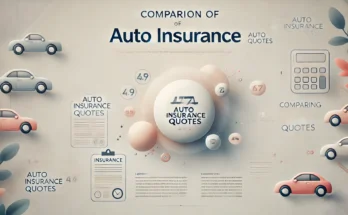Introduction
When you decide to compare automobile insurance, you unlock the potential for significant savings. Understanding the key elements involved in this process is essential. This guide will provide you with valuable insights into how to effectively compare automobile insurance policies.
Why Compare Automobile Insurance?
Comparing automobile insurance allows you to evaluate different policies side by side. This practice helps you identify the best coverage options for your specific needs. It can also lead to considerable savings on your premiums.
Key Benefits of Comparing Insurance
- Cost Savings: One of the most significant advantages of comparing policies is finding lower rates. Insurance premiums can vary widely, and shopping around can lead to substantial savings.
- Better Coverage: Different insurers offer varying levels of coverage. By comparing, you can find a policy that provides the best protection for your situation.
- Informed Decision-Making: Having multiple quotes allows you to make informed choices. You can weigh the pros and cons of each policy to find the one that suits you best.
How to Compare Automobile Insurance
To effectively compare automobile insurance, follow these essential steps:
Step 1: Gather Information
Before you start comparing quotes, gather all necessary information. This includes details about your vehicle, driving history, and current insurance policy if applicable.
Step 2: Use Online Comparison Tools
Many websites allow you to compare automobile insurance quotes quickly. Enter your information to receive quotes from multiple insurers. This process can save you time and provide a comprehensive view of your options.
Step 3: Evaluate Coverage Options
When comparing quotes, pay close attention to coverage options. Ensure that you understand what each policy covers. Look for essential components such as liability, collision, and comprehensive coverage.
Factors That Affect Your Insurance Rates
Understanding the factors that influence your insurance rates can help you make better comparisons. Here are some key elements to consider:
Driving Record
Your driving history plays a crucial role in determining your insurance rates. A clean record often results in lower premiums, while accidents or violations can lead to higher costs.
Vehicle Type
The make and model of your vehicle can affect your insurance rates. High-performance cars or luxury vehicles typically have higher premiums due to increased repair costs and risk of theft.
Location
Where you live can also impact your insurance rates. Urban areas with higher traffic volumes often have higher premiums compared to rural areas with lower accident rates.
Tips for Getting the Best Insurance Quote
To ensure you get the best possible quote when comparing automobile insurance, consider the following tips:
Maintain a Good Credit Score
A higher credit score often leads to lower insurance premiums. Insurers may use your credit history to assess risk. Paying your bills on time can improve your score.
Increase Your Deductible
Opting for a higher deductible can lower your monthly premium. However, make sure you can afford the out-of-pocket expense in case of an accident.
Ask About Discounts
Many insurers offer various discounts that can lower your premium. These can include discounts for safe driving, multiple policies, or affiliations with certain organizations.
Common Mistakes When Comparing Insurance
Avoid these common pitfalls when comparing automobile insurance:
Not Reading the Fine Print
Always read the details of each policy carefully. Understanding exclusions and limitations is crucial to avoid surprises later.
Focusing Solely on Price
While cost is important, it shouldn’t be the only factor. Ensure that you are also considering the coverage quality and customer service reputation of each insurer.
Forgetting to Review Regularly
Insurance needs can change over time. Regularly reviewing your coverage and comparing rates can help ensure you always have the best deal.
Conclusion
In conclusion, comparing automobile insurance is a vital step in finding the right policy for your needs. By gathering information, using comparison tools, and understanding key factors, you can make informed decisions. Regularly reviewing your options ensures you remain protected while saving money.

